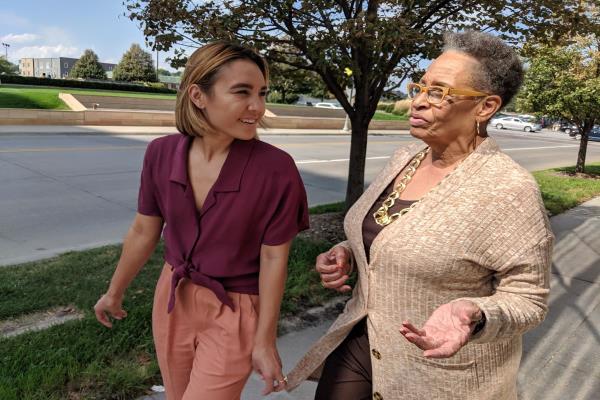Communication is the heartbeat of human connection, and as we engage with seniors, it's essential to recognize the nuances that come with a different generational context. In this blog post, we explore the art of effective communication with seniors, unveiling strategies that foster understanding, respect, and meaningful connections.
1. Patience as a Virtue
Patience lays the foundation for effective communication with seniors. Understand that processing information might take a bit longer, and allow space for them to express themselves at their own pace. Patience is the key to creating an environment where seniors feel heard and valued.
2. Active Listening: The Power of Presence
Active listening involves not just hearing words but truly understanding the message being conveyed. Maintain eye contact, nod in agreement, and respond appropriately. This not only aids comprehension but also communicates respect and genuine interest.
3. Empathy: Stepping into Their Shoes
Empathy is a powerful tool in effective communication. Take a moment to understand the emotions underlying their words. This deeper connection can lead to more meaningful conversations and a sense of being truly understood.
4. Clear and Simple Language
Avoid jargon or overly complex language. Use clear and straightforward expressions. This helps in conveying information more effectively, reducing the chances of confusion.
5. Non-Verbal Communication Matters
Facial expressions, gestures, and body language play a crucial role in communication, especially when verbal communication may be challenging. Be mindful of your non-verbal cues to enhance understanding.
6. Encourage Two-Way Conversations
Engage seniors in conversations that allow them to express themselves freely. Share stories, ask for opinions, and encourage them to contribute to the dialogue. This creates a dynamic and participative communication environment.
7. Use Memory Aids and Visuals
Incorporate memory aids and visuals to support communication. This might include using photos, writing down key points, or utilizing other visual cues to enhance understanding.
8. Mindful Tone and Volume
Be aware of your tone and volume. Some seniors may have difficulty hearing, and a clear and moderate tone can significantly improve communication. Avoid speaking too quickly, and articulate words carefully.
9. Technology as a Bridge
Embrace technology as a means of communication, especially if face-to-face interactions are limited. Video calls, emails, and messaging apps can help bridge the gap, fostering connections even when physical distances exist.
10. Encourage Independence
While offering support, encourage independence in communication. Allow seniors to express themselves autonomously, maintaining a sense of agency and control over their own narratives.
Effective communication with seniors is not just about exchanging words; it's about creating an environment of understanding, respect, and shared connection. By embracing these strategies, we bridge the generational gap, nurturing relationships that are not only meaningful but also transformative. It's a reminder that in every conversation, we have the opportunity to create a tapestry of connection that spans across the generations.



